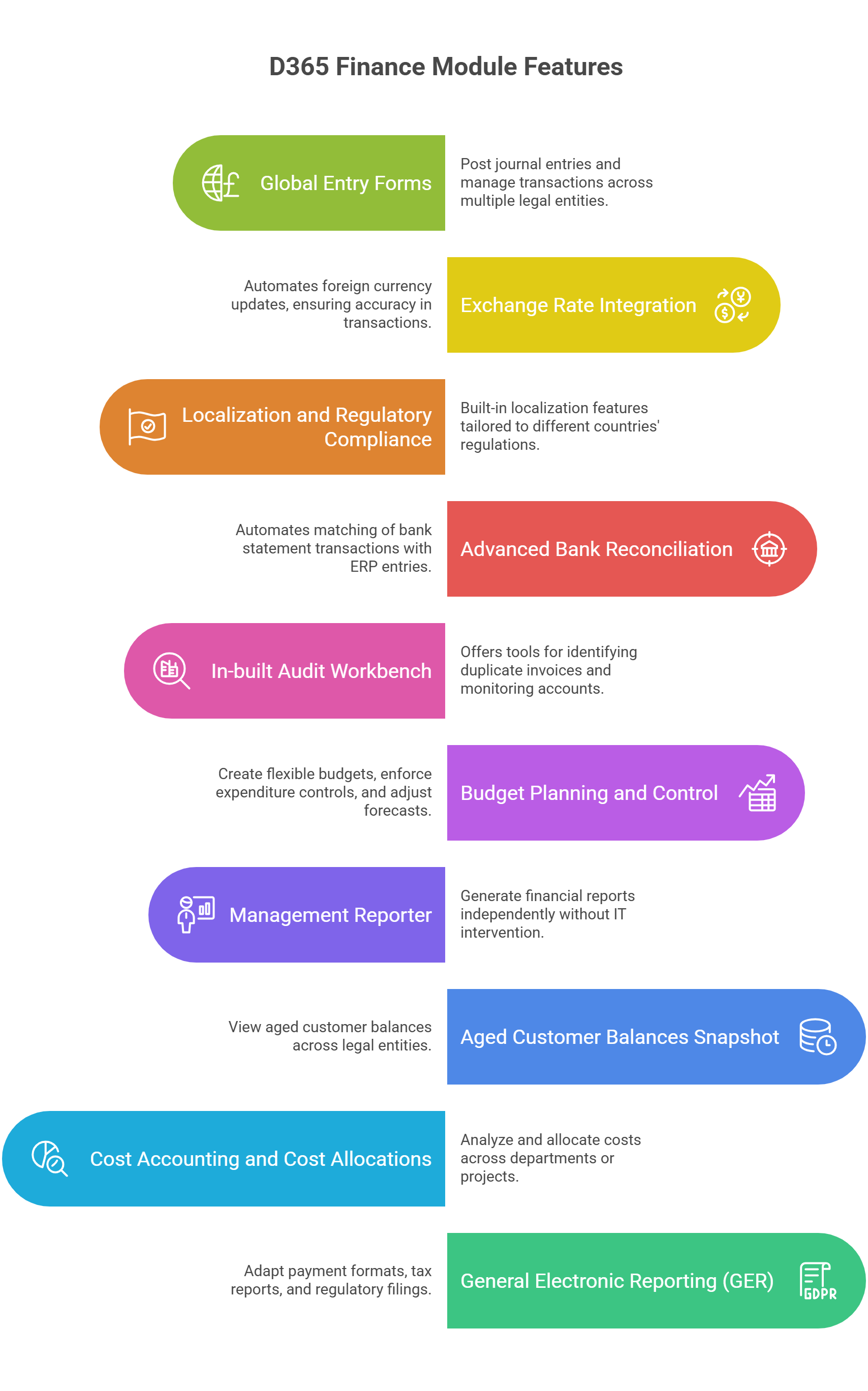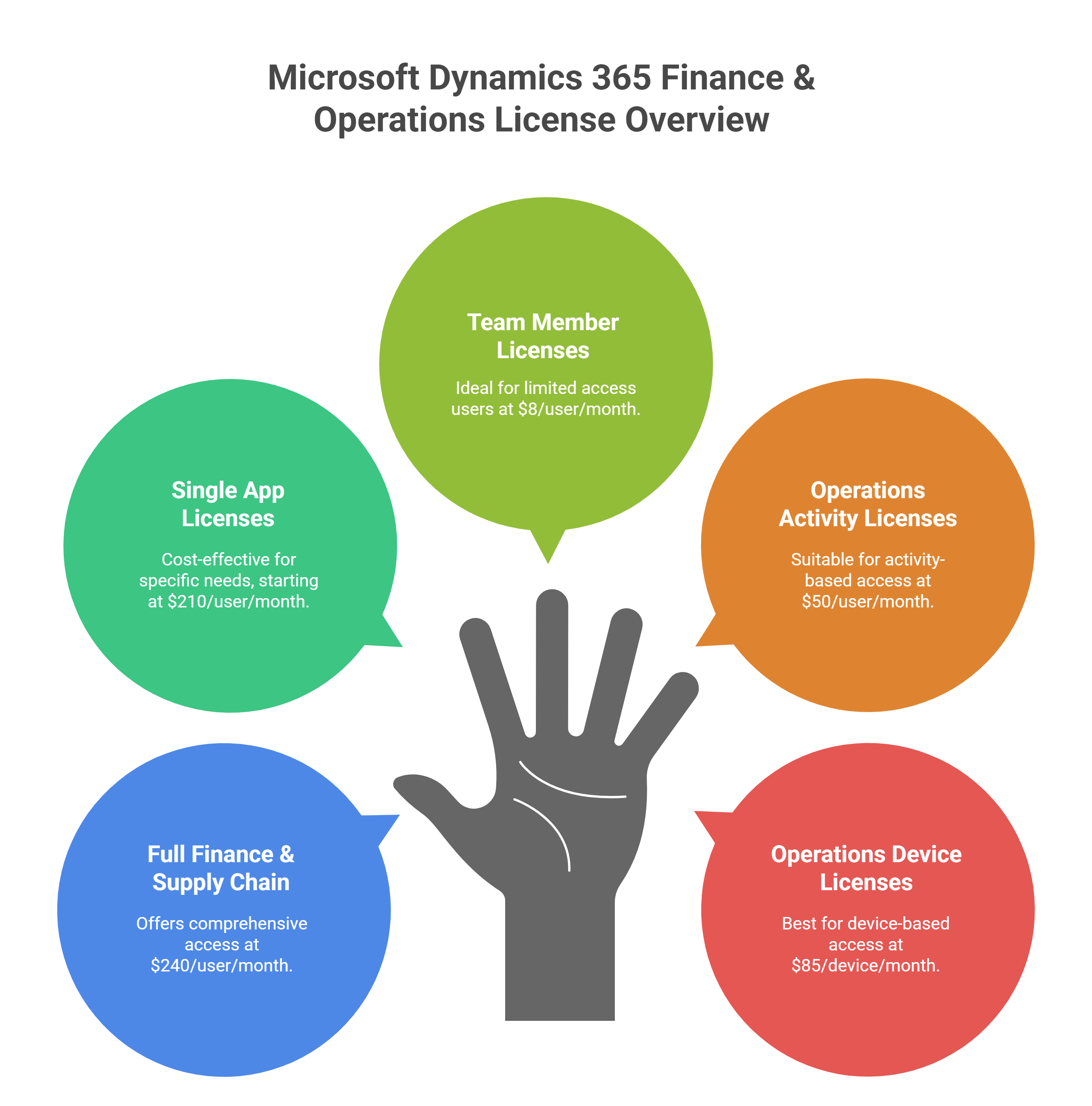What’s slowing down your finance team today? Is it month-end hassles? Approval bottlenecks? Inaccurate cash flow projections? Or trying to keep up with regulations that seem to change overnight?
For a lot of businesses, these aren't just occasional hurdles — they’re daily struggles. Traditional finance systems weren’t built for the pace and complexity companies face today. Manual processes, disconnected tools, and delayed insights make it harder to make quick, confident decisions.
This is where Microsoft Dynamics 365 Finance and Operations steps in. It’s designed to clear the roadblocks: giving finance teams real-time visibility, smarter workflows, built-in compliance support, and automation that actually saves time.
In this blog, we'll walk you through the challenges finance teams are facing right now — and show you how Dynamics 365 Finance helps solve them before they become bigger problems.
What is Microsoft Dynamics 365 Finance and Operations?
Microsoft Dynamics 365 Finance and Operations is a cloud-based ERP platform focused on automating and optimizing financial operations across an organization. It helps businesses manage financial management, budgeting, reporting, compliance, risk management, and predictive analytics — all in a unified platform.
Unlike traditional systems that operate in silos, Dynamics 365 Finance centralizes financial data, allowing real-time access, deep insights, seamless reporting, and automated workflows — whether you're running operations locally or across multiple countries.
Why Modern Businesses Choose Dynamics 365 Finance and Operations?
Automation of Core Financial Processes
Tasks like accounts payable, receivable, bank reconciliations, and ledger management are automated, reducing manual effort and operational costs.
Real-Time Financial Insights and Reporting
No more waiting for month-end closes. Teams access up-to-the-minute financial performance dashboards, AI-driven forecasts, and instant reporting.
Budgeting and Forecasting Intelligence
With advanced budgeting tools and predictive modeling, organizations can plan better, adjust faster, and anticipate market changes more accurately.
Global Operations Management
Dynamics 365 Finance and Operations supports multi-currency, multi-language, and country-specific compliance, making it ideal for organizations operating across borders.
Integrated Compliance and Risk Management
Built-in compliance frameworks (like GAAP, IFRS, VAT handling) and audit trail capabilities strengthen financial governance and reduce regulatory risks.
Seamless Microsoft Ecosystem Integration
Native integration with Office 365, Power BI, Azure, and Teams enhances collaboration, visualization, and scalability.
Understand the real cost breakdown for D365 projects and plan your budget confidently.
Thinking of moving from an older system or AX to the cloud? Here’s what you should know.
Explore how Dynamics 365 helps meet compliance needs while keeping your data secure.
Learn how businesses navigate upgrades to Dynamics 365 through real-world examples.
Core Features that Transform Finance Operations
Let’s take a closer look at some standout features in d365 Finance module that directly improve finance team productivity:

Global Entry Forms
Global Entry Forms allow users to post journal entries, create purchase invoices, and manage transactions across multiple legal entities without switching systems. This is a major advantage for shared service centers or multinational organizations, streamlining cross-entity activities, consolidating operational views, and significantly cutting administrative overhead.
Exchange Rate Integration
By integrating with external providers like OANDA, Dynamics 365 Finance and Operations automates foreign currency updates, removing the need for manual maintenance. This ensures accuracy in multi-currency transactions, reduces operational errors, and strengthens the reliability of financial reporting and audit processes for global businesses.
Localization and Regulatory Compliance
Dynamics 365 Finance and Operations provides built-in localization features tailored to different countries' tax codes, regulations, and reporting standards. Automated compliance updates help finance teams stay ahead of statutory requirements without extensive manual adjustments, minimizing regulatory risk and reducing the administrative burden.
Advanced Bank Reconciliation
The advanced bank reconciliation feature automates the matching of bank statement transactions with ERP entries using predefined rules based on amount, date, or transaction ID. This eliminates most manual reconciliation work, speeds up the financial close process, and improves the accuracy of cash flow reporting.
In-built Audit Workbench
The in-built Audit Workbench offers tools for identifying duplicate vendor invoices, monitoring high-spending accounts, and performing audit sampling internally. This strengthens financial controls, reduces dependency on external audit tools, and enhances the organization’s fraud prevention and compliance capabilities.
Budget Planning and Control
With detailed budget planning capabilities, Dynamics 365 Finance and Operations enables finance teams to create flexible budgets, enforce expenditure controls, and adjust project forecasts dynamically through approval workflows. This helps organizations maintain stronger financial discipline and adapt quickly to changing business priorities.
Management Reporter
Management Reporter empowers finance teams to generate balance sheets, income statements, and cash flow reports independently without IT intervention. With customizable templates and scheduling options, finance professionals can accelerate financial reporting cycles and improve visibility into organizational performance.
Aged Customer Balances Snapshot
Finance teams can view aged customer balances across legal entities in a single, consolidated snapshot. This capability improves collections management, supports more proactive receivables strategies, and ultimately enhances cash flow visibility and working capital optimization.
Cost Accounting and Cost Allocations
Cost Accounting features allow organizations to analyze and allocate costs across departments, projects, or products using flexible models. Finance teams gain better control over indirect costs, enabling more accurate budgeting, pricing strategies, and profitability analysis.
General Electronic Reporting (GER)
The General Electronic Reporting (GER) framework enables finance users to adapt payment formats, tax reports, and regulatory filings without needing developers. This speeds up compliance reporting, reduces reliance on IT, and enables faster responses to changing regulatory environments.
Role of Artificial Intelligence in D365 Finance
AI is no longer a future add-on — it's a core part of Dynamics 365 Finance and Operations today.
Predictive Cash Flow Forecasting
AI models predict future cash flows based on historical financial data and payment patterns.
Customer Payment Insights
Machine learning models predict the likelihood of on-time customer payments, helping finance teams prioritize collections.
Intelligent Budget Proposals
AI analyzes past spending patterns to create smarter, more realistic budget recommendations.
Risk Detection
AI-driven anomaly detection helps finance teams spot irregular transactions or compliance risks faster.
Looking for expert Microsoft Dynamics 365 Finance and Operation Support?
Case Study: How We Helped a Nonprofit Modernize Financial Management
One of our clients, a leading nonprofit, needed a modern solution to handle growing volumes of donations, investment management, and administrative workflows. They chose Microsoft Dynamics 365 Finance and Operations for Charities to bring structure and scalability to their operations.
The organization needed more than just basic donation tracking. Their goal was to create an end-to-end revenue cycle management (RCM) system that could integrate with their in-house EHR platform and manage a wide range of tasks—patient intake, eligibility checks, claim submissions, remittance postings, billing reports, and more. They also wanted better oversight, faster approvals, and real-time visibility into claims and collections to improve financial outcomes.
Dynamics 365 Finance and Operations, integrated with Azure Cloud Services, provided the foundation they needed. With built-in capabilities for unlimited users, online donations, donation splits, and investment handling, the solution was customized to fit their expanding needs. The implementation took 10 months, and by the end, the nonprofit had a streamlined, scalable finance system designed to manage donations and investments with clarity and confidence.
Key improvements after implementation:
Unified operations: Donation, claim, and investment management were consolidated into a single platform, improving coordination across departments.
Elevated financial performance: Real-time tracking and reporting enabled more informed decisions about fund allocation and investment strategies.
Agile event coordination: Fundraising events became easier to manage, with live donation tracking and immediate reporting available during and after campaigns.







